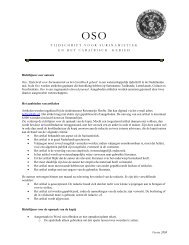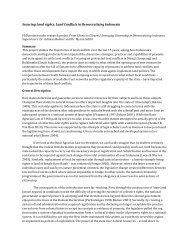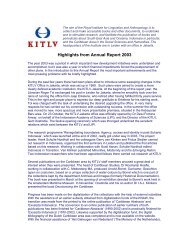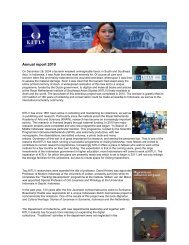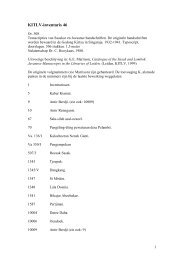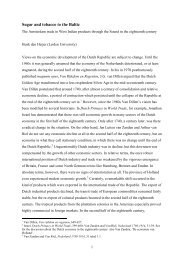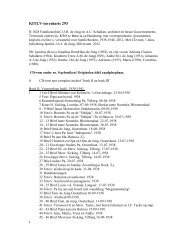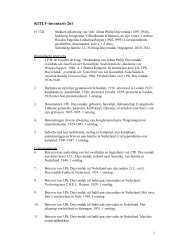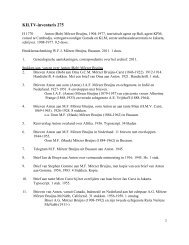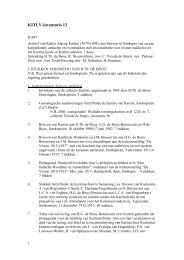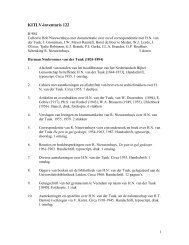Create successful ePaper yourself
Turn your PDF publications into a flip-book with our unique Google optimized e-Paper software.
18 the javanese kris<br />
his collection a few years after his death in 1890. Schmeltz was a scholarly recluse and<br />
evolutionist; his theory that the kris was a remnant of an ancient snake cult gained little<br />
credence.<br />
In two articles, the administrator Knebel discussed several aspects of Javanese ‘krisology’<br />
including the traditions of considering krisses as powerful objects, of bestowing honorific<br />
titles on them and of measuring them with the thumb or other aids to determine their<br />
magical potency and functionality. Knebel’s publications coincide most closely with<br />
the interests of present-day cultural anthropology, in those days a discipline still in its<br />
infancy.<br />
Finally, Rosenhain commissioned a microscopic investigation of the layers of metal<br />
of a recently-made kris from Trengganu (Malaysia), and concluded that the pieces of<br />
iron that were used, two of which the smith considered and processed as pamor material,<br />
did not differ essentially in their composition. The visible imperfections of the forging<br />
formed the damascene pattern on this kris. The slags remaining between the welded layers<br />
of iron were affected by the etching of the blade and changed colour.<br />
J.D.E. Schmeltz’s Indonesische Prunkwaffen (Indonesian Ceremonial Weapons) was to<br />
remain the standard reference work for the kris for a considerable time. In the older<br />
documentation of collections in Dutch ethnological museums this early source is invariably<br />
given as a reference. After 1910 Groneman’s Der Kris der Javaner was published and<br />
between 1916 and 1918 J.G. Huyser’s extensive series of articles entitled Het vervaardigen<br />
van krissen (The manufacture of krisses) appeared. 6 Between them, Groneman and<br />
Huyser present an almost complete picture of the activities performed by various craftsmen<br />
to make a kris. Huyser’s work is the most detailed. 7<br />
However, Groneman’s publication on the Javanese kris is the most important, certainly<br />
if we look at his historical role in sounding the tocsin for the profession of the<br />
empu, the Javanese kris smith, and through his passionate attempts – that were doomed<br />
to fail miserably – to save the craft from ruin.<br />
Isaäc Groneman (1832-1912) and his experiments with nickel<br />
pamor<br />
Isaäc Groneman was born in the Dutch town of Zutphen. Having read medicine, he<br />
worked for several years as an obstetrician but left for Java in 1858 to practise there as<br />
a doctor in various places, lastly in Yogyakarta as personal physician to the sultan. After<br />
arriving in the Dutch East Indies, he immersed himself in Javanese culture and published<br />
on a large variety of subjects, particularly archaeology and the traditional culture of the




